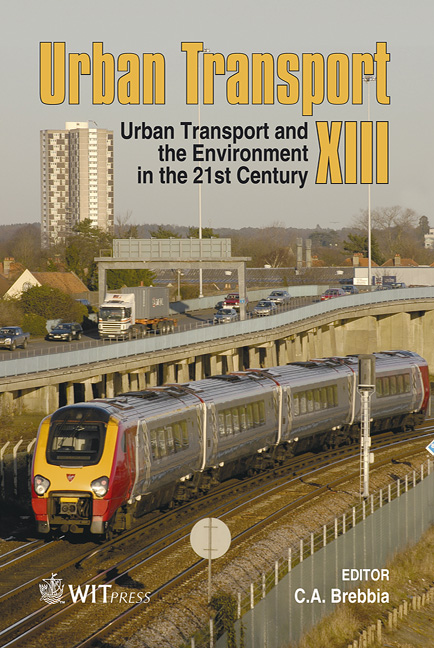An Optimisation-based Traffic Regulator For Metro Lines
Price
Free (open access)
Transaction
Volume
96
Pages
10
Published
2007
Size
560 kb
Paper DOI
10.2495/UT070411
Copyright
WIT Press
Author(s)
A. P. Cucala, A. Fernandez, F. de Cuadra & E. Pilo
Abstract
This paper presents a new traffic regulation model for metro lines based on the optimisation of a cost function along a time horizon. The resulting control actions modify nominal running times and dwell times to compensate timetable and headway deviations. The proposed quadratic programming model is suitable to include the main operation constraints efficiently: minimum interval, limits in the control actions and the typical operation criterion of preventing the actuation of signalling systems between platforms. Quadratic programming models are computationally efficient, and this allows the execution of the control loop every few seconds, and the management of long time horizons. In consequence, regulation performance and stability is improved, and the tuning of regulation parameters according to the operation requirements is simplified. The paper describes the simulation results of the proposed regulation model applied to a realistic metro line. A traffic perturbation model has been considered in order to analyse the stability of the line with different configuration parameters of the controller. Keywords: railway traffic control, optimisation, predictive control. 1 Introduction It is well known that metro lines are unstable, because train delays are propagated to the following trains by the signalling systems when the minimum headway between successive trains is reached [1], and delays increase at each station due to the accumulation of passengers [2]. Traffic regulation strategies are then necessary to prevent the traffic degradation and to observe the quality requirements.
Keywords
railway traffic control, optimisation, predictive control.





